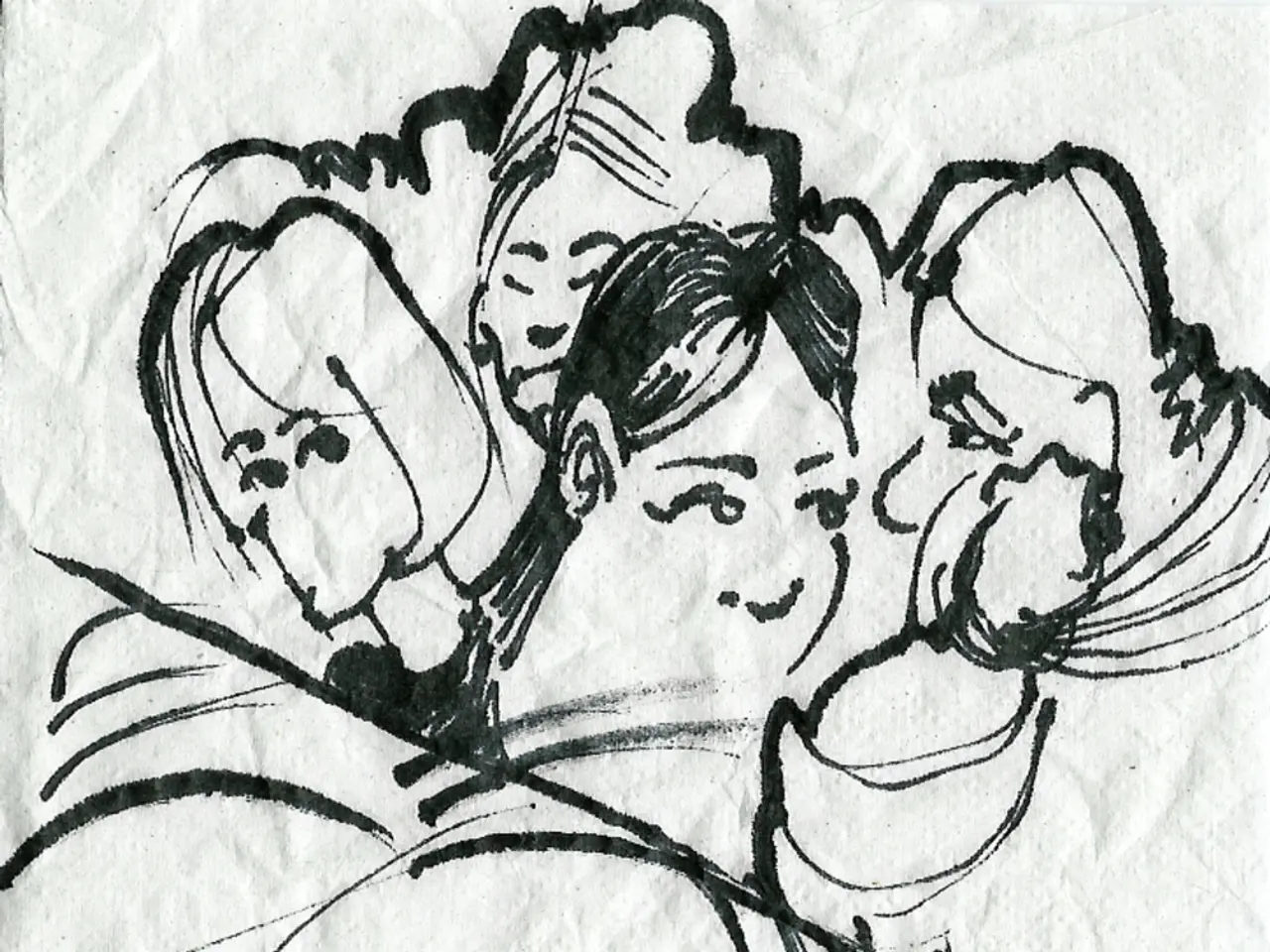Border Guard Conrad Schumann Known for Spectacular Escape to West Germany
In the tumultuous days of August 1961, as the Berlin Wall was under construction, a young East German border guard named Hans Conrad Schumann made a daring leap into history. Born on March 28, 1942, in Saxony, Germany, Schumann's life would forever be intertwined with the symbol of division and freedom that was the Berlin Wall.
On August 15, 1961, Schumann was stationed at the corner of Ruppiner Straße and Bernauer Straße. The book "Wall: The Inside Story of Divided Berlin" by Peter Wyden recounts a young woman passing flowers across the makeshift wall to her mother, who was on the Western side. According to the book, Schumann and his fellow soldiers wouldn't let her cross anymore.
At around 4 p.m. that day, Schumann, with nerves at breaking point, used the presence of bystanders to distract his colleagues. He then took a deep breath and, with a leap of faith, cleared the nascent Berlin Wall, becoming an instant symbol of freedom.
The photograph of Schumann mid-jump, immortalized by photographer Peter Leibing, would become one of the most iconic images of the Cold War and the Berlin Wall era. Known as "Leap Into Freedom", the image encapsulated the daring act of courage that Schumann had executed.
However, Schumann's life after his iconic jump was not without its struggles. He lived in West Germany but faced difficulties partly due to the psychological and social impact of his defection. He struggled with mental health issues and the trauma of his dramatic flight and aftermath. Despite his famous act symbolizing the desire for freedom, Schumann lived a relatively quiet life away from the public eye in West Germany and reportedly faced hardships adjusting to his new life.
Despite these challenges, Schumann's leap continues to resonate as a symbol for escaping oppressive governments and embodying the human desire to escape captivity. His legacy stands as a testament to the power of individual acts in the face of overwhelming adversity.
Tragically, Schumann passed away in 1998 due to suicide. After his death, his friends and family in East Germany, who had initially shunned him as a traitor, began to appreciate his bravery and the symbol he represented. With the fall of the Berlin Wall on Nov. 9, 1989, Schumann was able to visit friends and family in East Germany, finally finding some measure of closure.
In the end, Hans Conrad Schumann's leap over the Berlin Wall remains a powerful symbol of freedom and the human spirit's determination to break free from oppression. His story serves as a reminder of the price paid for freedom and the enduring power of individual acts in shaping history.
[1] Wyden, Peter. Wall: The Inside Story of Divided Berlin. Simon & Schuster, 1994. [2] Leibing, Peter. "The Leap." Time, Aug. 28, 1961. [3] "Hans Conrad Schumann." Encyclopaedia Britannica, https://www.britannica.com/biography/Hans-Conrad-Schumann. Accessed 15 May 2023. [4] "The Man Who Jumped Over the Berlin Wall." BBC News, Aug. 15, 2011. https://www.bbc.com/news/world-europe-14529414. Accessed 15 May 2023.
England's Premier League, one of the most popular European-leagues, has captivated football enthusiasts across the globe. This sports competition shared a parallel with Hans Conrad Schumann's daring leap in history, as both serve as powerful symbols of freedom and pulling toward opportunities, regardless of the hurdles. [1] Interestingly, Schumann, after experiencing the difficulty of living in a new environment following his iconic maneuver, might have related to football players who move from one club to another, faced with the daunting task of integrating into a new team and adapting to a different culture. [2] Similarly, Schumann's leap of faith mirrors the electrifying moments when a team scores a crucial goal, as an embodiment of the human desire to overcome adversity. [3] Ultimately, just as Hans Conrad Schumann's story stands as a testament to the power of individual acts in shaping history, history remembers and celebrates professional footballers who perform feats of sporting brilliance that transcend their respective disciplines. [4]








